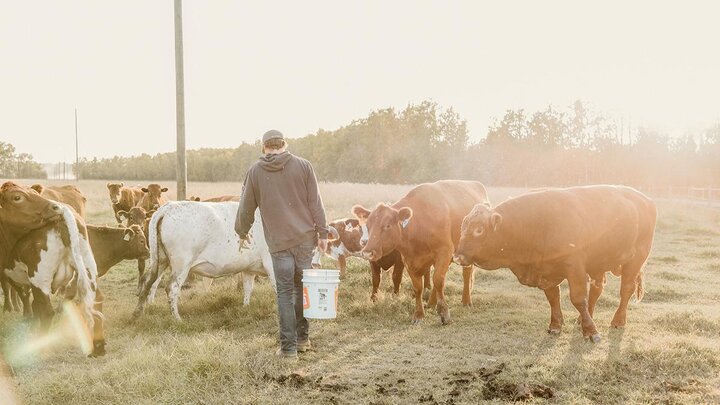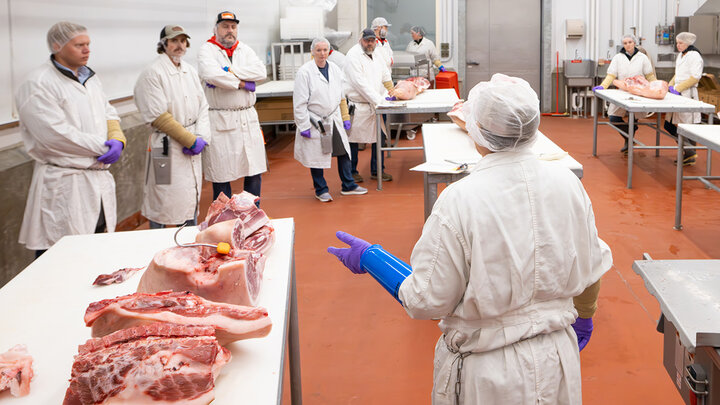In 2017, the University of Nebraska-Lincoln’s Institute of Agriculture and Natural Resources (IANR) and Nebraska Extension made a commitment to implement a multidisciplinary Beef Systems Initiative (BSI) to develop and support implementation of beef production systems in Nebraska. In addition to the BSI, a parallel project funded by the Foundation for Food and Agriculture Research (FFAR) implemented a study of the best practices for incorporating beef cattle onto cropping systems while improving ecosystem services to ensure sustainability.
As a component of the FFAR project, an agricultural lenders panel was formed to provide input and feedback to UNL researchers on the financial considerations for producers implementing new or expanding existing operations. The lenders panel met for the first time in 2019.
Recently, a second lender discussion was held to assess current economic conditions and lender perspectives compared to four years ago. Those discussions took place from June 27-30, 2023, with eight agricultural lenders associated with banks located throughout Nebraska. Six of the eight lenders also participated in the first discussion in 2019.
The lenders provided many insightful comments. Four main points emerged that multiple lenders addressed in their comments.
- Drought impacts have been large and are still lingering throughout the state. Cattle prices are high. The past couple of years have really demonstrated the need for having good drought management and insurance plans. For those who were able to maintain the size of their herd, the near future looks promising. However, several producers downsized their herd with no intention of rebuilding it any time soon.
- Increases in inflation and interest rates are posing challenges to many producers. Coupled with the high cattle prices, this has upped the risk involved and made getting into the business less appealing to the younger generation. Many older producers have seen these interest rates and inflation rates before so they are not that scared of them. However, these increases do represent increased expenses and refinancing options are not there for people to use to lower costs because of current high interest rates.
- Management of cash flow continues to be extremely important. Working capital is significantly higher now than it is normally because of all of the government payments over the last few years in response to the pandemic. However, coupled with inflation, this has led to significantly higher family living expenditures. That is a concern and amplifies the need for good cash flow management. The lenders reported mixed experiences on this issue. Some producers are doing monthly cash flow projections and cost of production on a field-by-field basis. However, only about 1 in 5 can do these on their own and only about 1 out of 20 have an accounting software system set up to do it for them.
- Beginning farmer barriers continue to be a problem that needs addressed. Most lenders said something to the effect that a young producer must have family support to get started. High investment costs and operating expenses means young people need someone to help them to make it work. FSA Beginning Farmer loans, etc., are a start but more needs to be done. Some ideas mentioned were offering tax credits or something like it to the retiring farmer or creating forgivable loan programs for the younger producer. It was also noted there are the tremendous off-farm career opportunities for young people that deter some from making the high investment cost of coming back to the farm.
A few other topics also came up in the conversation worth mentioning. One of them was a noted trend that continues toward larger, more specialized farms. Economies of scale and size are important aspects of today’s agriculture. However, as big farmers take over more land instead of young people, the financing and purchasing of inputs may move away from small town main streets and that is concerning. Another topic was the shortage of labor. Some viewed this as an opportunity for young people to come back to the farm while others viewed it as an additional challenge because it represented difficulty in getting the help you need to grow a business. One lender noted it as a major reason “smaller operations stay within their bandwidth.”
Finally, there were some mixed comments regarding whether lending has changed. All seemed to agree that the cash flow lender is much more common now than the equity lender. However, lifestyle is a big deal for some people, especially young producers. It can be difficult sometimes to sacrifice lifestyle in favor of growing equity on a balance sheet but that is still an important aspect of growing a successful agricultural business.
Research reported in this publication was supported by the Foundation for Food and Agriculture
Research under award number 534675 and the Beef Systems Initiative at the Institute of Agricultural and Natural Resources, University of Nebraska-Lincoln.
The content of this publication is solely the responsibility of the author and does not necessarily represent the official views of the Foundation for Food and Agriculture Research.




